Azerbaijani Food Dishes: Basic Overview
Common Ingredients
Common Cooking Methods
Courses
Meals
Key Taste
Eating Etiquette
Meal Presentation
Culinary Festivals
Influence and Fusion
Popular Types of Azerbaijani Dishes
-
Soups
Azerbaijani soups range from light, refreshing appetizers to hearty main dishes.
These soups are prepared with a wide range of ingredients, such as lamb, vegetables, and yogurt.
Soups can be served hot or cold in Azerbaijan.
Certain soups are so liquid that they can be consumed as beverages.
-
Stews
Azerbaijani stews are hearty, savory, energy-rich, and fit for the main course.
These stews are usually based on meat (especially lamb), with the addition of various vegetables.
Fresh herbs and spices are used extensively in such dishes.
-
Cake and Pastries
Cakes and pastries have a long history in Azerbaijan and come in many varieties.
Azerbaijani cakes and pastries are very sweet and often made from rich doughs.
All-purpose flour, dried fruits, butter, sugar or sugar syrup, and spices are popular ingredients for these treats.
Azerbaijanis usually serve cakes and pastries with tea, fruits, or nuts as snacks or desserts.
-
Bread and Doughs
Bread is the staple food in Azerbaijan and has a near-sacred status.
Locals pair bread with all types of dishes, from soups to stews and rice dishes.
Bread is also a vital ingredient to thicken soups or form the base of many Azerbaijan main dishes.
-
Snacks
Snacks in Azerbaijan include various small-sized dishes, such as rolls, fried items, and dairy products.
Many snacks are famous appetizers, entrees, and street food dishes.
Famous Azerbaijani dishes are popular dishes that fully use the cooking techniques and are enjoyed by many in Azerbaijan. These delicacies also reflect the country’s extensive agricultural diversity and cultural heritage.
One of the outstanding features of Azerbaijani dishes is their reliance on fresh, locally sourced produce. The country offers a diverse range of fruits, vegetables, and aromatic herbs.
Fish is also common, especially in regions near the Caspian Sea, while lamb and game meats are enjoyed in certain areas. Azerbaijan has been influenced by Turkish treats, Iranian delights, Armenian specialties, Russian cuisine, and Central Asian culinary traditions.
More information about traditional Azerbaijani food will be provided, such as its main attributes, global popularity, and healthfulness.
Next, I will reveal the best 24 dishes in Azerbaijan. Each specialty in this post is an exciting find featuring valuable information about a dish’s origin, ingredients, and cultural importance.
Then, I will look deeper into the food culture of Azerbaijan along with the country’s dining etiquette.
24 Famous Azerbaijani Dishes
Use my interactive filters, such as alphabetical sorting, main ingredients, taste, cooking methods, dish types, courses, and global popularity, to explore the most famous 24 dishes in Azerbaijan.
There are additional filters based on specific culinary styles, such as traditional, national, and street food options. Use them to make your experience smoother.
Pakhlava
- Traditional
Pakhlava is an Azerbaijani sweet treat that traces its roots to Ottoman cuisine and is a variant of the globally renowned layered dessert baklava.
Though traditionally made for Novruz, pakhlava has become a year-round staple enjoyed across restaurants, bakeries, and households.
The hallmark of Azerbaijani pakhlava is its multiple layers of nuts, generously drenched in syrup or honey. Often topped with a blend of egg yolk and saffron, this layered dessert is garnished with nuts like walnuts or hazelnuts.
Pakhlava is considered one of the sweetest pastries and, thus, commonly savored with Azerbaijani black tea.
Lavash
- Traditional
Lavash is a thin, usually leavened flatbread that plays a vital role in Azerbaijani cuisine. It is made from flour, water, yeast, sugar, salt, and sesame or poppy seeds.
In Azerbaijan, lavash is a popular side dish and a key ingredient in specialties like kalam dolması (stuffed cabbage leaves) and xəngəl (boiled flat dough with a white sauce and chicken).
This versatile bread is also great for turning into wrap sandwiches, pizzas, or desserts. Interestingly, it can be dried for long-term storage and easily rehydrated with water, butter, or cheese.
Outside Azerbaijan, lavash is well-known in Armenia, Iran, and Turkey.
Plov
- National
- Traditional
Plov, or pilaf, is a famous one-pot rice dish in Azerbaijan and many other countries. The Azerbaijani version usually includes rice (preferably long-grain varieties), meat or fish, butter, saffron (or cinnamon), dried fruits, nuts, and various herbs.
Many families and restaurants in Azerbaijan have their own way of creating and serving plov, but it’s highly recommended to try the versions in Baku, the country’s capital city.
Shah plov is a sought-after variation with a pie-like shape. It is famous for having the rice covered in a layer of lavash or gazmag (a golden crust made of flour, butter, egg, saffron water, and yogurt).
Another well-known plov variation is shirin plov, which stems from Baku. This version also features a gazmag layer, but its filling is made with chestnuts and seasonal dried fruits, such as apricots, raisins, and black plums.
Dolma
- National
- Traditional
Dolma is a broad family of Azerbaijani stuffed dishes that are rooted in Ottoman cuisine. Locals often prepare it for Novruz and other special occasions.
Popular dolma varieties consist of yarpaq dolması (stuffed vine leaves), kalam dolması (stuffed cabbage leaves), şəkərbura dolması (stuffed quinces), nur dolması (stuffed pomegranates), and lülə kabab dolması (stuffed peppers).
The typical Azerbaijani dolma features a stuffing of minced lamb or beef, rice, onion, salt, pepper, and spices. Dried fruits, nuts, or herbs are common additions.
Dolmas are cooked in water or broth and served with yogurt, garlic, or complementary sauces.
Levengi
- National
- Traditional
Levengi, also known as lavangi or ləvəngisi, is an immensely well-known dish in Azerbaijan. It consists of baked fish or chicken stuffed with a delectable mixture of walnuts, onions, and various condiments. Some versions feature ducks and aubergines.
Levengi is predominantly found in the Absheron Peninsula and districts like Lankaran, Lerik, Astara, Masally, Salyan, and Neftchala. One of the special variants is balıq ləvəngisi, a stuffed fish dish traditionally prepared for Novruz.
Usually, the favored fish for balıq ləvəngisi are the Caspian kutum, asp, or carp from the Caspian Sea. These fish are stuffed with peeled walnuts, fried onions, sour prunes or cherries, narsharab syrup, and dried fruits.
Lula Kebab
- Street Food
- Traditional
Lula kebab is a favorite kebab specialty of Azerbaijani cuisine. It is essentially a dish of minced meat cooked on skewers using minced meat.
Typical lula kebab uses mutton or a mix of minced sheep and beef meat, onion, sheep tail fat, salt, and pepper. Optional ingredients include sumac and lavash.
To make this Azerbaijani grilled meat specialty, the ground meat is seasoned, wrapped around skewers, and grilled over coal. Locals serve the grilled meat between lavash layers, with a sprinkling of sumac for added flavor.
Qutab
- Street Food
- Traditional
Qutab, also known as gutap, is an Azerbaijani dish of thinly rolled dough cooked on a convex griddle. This well-known flatbread is filled with a range of ingredients, including pumpkin, greens, lamb, or even camel meat.
Popular accompaniments for qutab are butter, yogurt, and various herbs and spices. There are many qutab variations in Azerbaijan, such as shamakhy qutab, yashyl qutab, and qarın qutabı.
Shorgoghal
- Traditional
Shorgoghal is a cherished Azerbaijani pastry with a round shape and a filling of butter, anise or fennel seed, cumin, cinnamon, turmeric, salt, and pepper.
This spice-filled flaky bread is reserved for Novruz in Azerbaijan, accompanying other festive delights like pakhlava and shekarbura (a type of sweet pastry).
Interestingly, shorgoghal embodies solar symbolism. Its round form and vibrant yellow hue draw inspiration from the sun, which gains strength after the vernal equinox and heralds the rejuvenating warmth of spring.
To make shorgoghal, the baker enriches puff pastry dough with butter, cuts it into strips, twists it into circles, and flattens the circles before adding the spiced filling. Next, shorgoghal is brushed with saffron-colored egg yolk and adorned with poppy seeds before baking.
Bozbash
- Traditional
Bozbash is a traditional dish in Azerbaijan of Persian origin. It was first popularized during the 19th century, and the origin of its name is believed to be “light gray,” which indicates the color of the dish.
Bozbash comprises meat bases, peas, potatoes, and local spices such as turmeric and saffron. Its most famous version is kufta bozbash, which has a large-sized meatball in the bozbash broth.
Other famous Azerbaijani variants are qiupta-bozbashi and parcha-bozbashi, which primarily consist of lamb meat.
Düşbərə
- Traditional
Düşbərə, or dushbere, is a popular Azerbaijani dumpling dish and a local variety of dushbara. Compared to dushbara variants in other countries, düşbərə is distinctively smaller with a thicker dough.
In Azerbaijan, people prepare düşbərə with mutton, onions, vinegar, dried mint, pepper, and salt. The dumplings are boiled in water or meat broth and served with a garnish of dried mint and a vinegar-garlic mix.
Qovurma
- Traditional
Qovurma is a family of popular dishes in Azerbaijani cuisine. This term denotes a range of dishes made by frying meat in butter and cooking it with dried fruits, herbs, or vegetables.
Verjuice or sour grape juice is a common flavoring agent in qovurma. Notable qovurma varieties include lamb qovurma, liver qovurma, and sabzi qovurma, with the latter being a lamb stew enriched with herbs.
Piti
- National
- Traditional
Piti is a soup in Azerbaijan coming from the South Caucasus and Central Asia. It is traditionally prepared in individual glazed crocks, which are called”piti” in Turkic languages.
The main ingredients of piti are mutton, tomatoes, potatoes, chickpeas, and saffron water. The soup-based creation is also covered with fat and cooked sealed.
There are many other piti variations, like shaki piti, which is made with chestnuts cooked in an earthenware pot for 8–9 hours.
Consuming piti like an Azerbaijani takes two steps: pouring the broth over crumbled bread with spices before adding the meat and vegetables. Piti is especially popular in the Absheron Peninsula and districts like Lankaran and Lerik.
Buglama
- Traditional
Buglama is a traditional Azerbaijani stew originating from Eastern Europe. It is famous for its lamb pieces stewed with onions, tomatoes, peppers, and various spices like black pepper and bay leaves.
The term “buglama” translates to “steamed,” referring to the unique cooking method where the lamb simmers in its own juices and uses minimal liquid. This lamb stew is typically accompanied by bread or rice.
Qatiq
- Traditional
Qatiq is a fermented milk product popular in Azerbaijan. Its preparation involves fermenting boiled milk for 6–10 hours in a warm setting.
Occasionally, red beets or cherries are incorporated into qatid for color. While qatiq is preserved in a cool environment for two to three days, it becomes sour if stored beyond that period.
When strained, qatiq transforms into suzma, a dense cheese-like substance that can be dried and shaped into balls, creating qurut.
Outside Azerbaijan, qatid is popular among the Turkic populations of Turkey, many Central Asian countries, and parts of Russia.
Qurut
- Traditional
Qurut is a popular food item in Azerbaijan. It is derived from qatiq and prepared by boiling and straining the leftover buttermilk from butter-making, shaping the thickened buttermilk into balls or flakes, and sun-drying them.
Qurut is a versatile ingredient in various Azerbaijani dishes, including soups, stews, rice dishes, and pastries. These balls of dairy treat are also enjoyed as a snack or dissolved in water to create refreshing beverages.
Many Turkic countries feature qurut in their diet and call it by other names, such as kashk.
Zülbiyə
- Traditional
Zülbiyə, or zulbiya, is also known as zülbiyə, is a deep-fried Azerbaijani dessert made from a batter of flour, yogurt or ghee, baking soda or yeast, and sugar.
Zülbiyə is made by pouring the batter in circular patterns into hot oil to create crispy, hollow rings. These rings are then drenched in a sweet, thick syrup flavored with aromatics like rose water or cardamom. Finally, the dessert is garnished with chopped pistachios or saffron threads.
Azerbaijani people often serve zülbiyə on special occasions, including weddings, birthdays, and holidays. In addition, zülbiyə is commonly paired with tea or doogh, a yogurt drink, either as a sweet indulgence or a breakfast item.
While zülbiyə has Persian origins, it has become a beloved treat in India and many countries across South Asia and the Middle East.
Dovga
- Traditional
Dovga is a common Azerbaijani soup or drink suitable for serving either hot or cold, depending on the season. It comprises yogurt, rice, spinach, chickpeas, dill, mint, coriander, and, sometimes, eggs.
Dovga is usually served between meat courses, especially at weddings. Originating in the Western region of Azerbaijan, this yogurt soup is now a famous dish in Turkey, Iran, and Armenia.
Ovdukh
- Traditional
Ovdukh is a popular cold soup in Azerbaijan. While closely related to dovga, it consists of a kefir yogurt base and requires no heating during preparation. This refreshing dish is especially popular during the hot summer months in Azerbaijan.
Essential ovdukh ingredients include chopped dill and cucumber, while eggs and additional herbs are optional. The soup is often diluted with water to create a thirst-quenching beverage.
Ovdukh usually lacks meat or starchy components, making it a suitable choice for vegetarians. Many summer excursions in Azerbaijan feature ovdukh as part of a cold, refreshing meal.
Shekarbura
- Street Food
- Traditional
Shekarbura, or shekerbura, is a traditional Azerbaijani dessert with historical roots dating back to the Sassanid era. This sweet pastry is especially popular during the Novruz holiday and features a crescent-shaped dough filled with ground almonds, hazelnuts, walnuts, and sugar.
The cardamom-flavored dough of shekarbura often displays a pattern of stitches, symbolizing the half-moon or the flame of fire. In Azerbaijan, preparing shekarbura is a communal activity that involves a gathering of relatives, friends, or neighbors.
Khangal
- Traditional
Khangal is a classic Azerbaijani dish reserved for special occasions like weddings, holidays, or family gatherings.
Khangal includes small, thin squares of dough boiled in a meat broth and served with lamb or chicken and a garlic sauce.
Azerbaijanis often serve this hearty combo of dough and meat broth with bread, salads, pickles, or yogurt. For an added burst of flavor, some people sprinkle red pepper flakes, dried mint, or vinegar on top.
Soyutma
- Traditional
Soyutma is an Azerbaijani culinary creation of long and slow-cooked meat, usually lamb or chicken. The preparation involves boiling the meat with seasonings like salt, pepper, bay leaves, and other spices until it becomes tender enough to fall off the bone.
The final step in preparing soyutma involves reducing and thickening the broth with flour or cornstarch to create a rich sauce. Garnished with fresh herbs, this hearty and satisfying dish is fantastic for a main course or a side.
Soyutma is often accompanied by bread, rice, or potatoes in Azerbaijan. Locals serve it on many special occasions, such as weddings, holidays, or family gatherings.
Djiz-biz
- Traditional
Djiz-biz, also known as jiz-biz or jiz-byz, is an Azerbaijani fried dish made of lamb meat and organs, including kidneys, hearts, lungs, and intestines. Many people add potatoes or tomatoes (in the summer) to this recipe.
Djiz-biz is a nutritious and easy-to-make lamb offal specialty. Its common accompaniments are bread, pickles, and vegetables.
Pomidor-Yumurta
- Traditional
Pomidor-yumurta, or pomidor çığırtması, is a simple Azerbaijani breakfast dish consisting of eggs and tomatoes. It was probably inspired by a similar Maghrebi dish called shakshouka.
The making of pomidor-yumurta begins with chopping and cooking tomatoes on a copper pan until they release their juice. Then, the beaten eggs are added, along with some salt and optional spices.
Badambura
- Street Food
- Traditional
Badambura is an Azerbaijani pastry made of multiple layers of flaky dough and a filling of sugar, almonds, and ground cardamom.
Badambura is typically brushed with an egg wash and baked until it achieves a golden-brown hue. People serve this pastry by cutting it into small portions and dusting it with powdered sugar.
While badambura is especially popular during Novruz celebrations, it is also enjoyed as a dessert or snack year-round, forming a part of the food culture of Azerbaijan.
What Is Azerbaijan’s Food Culture?
The following three factors define the food culture of Azerbaijan: diverse culinary influences, meal composition, and core ingredients.
As Azerbaijan sits at the crossroads of Europe and Asia, its cooking traditions have been shaped by many renowned cuisines.
Notable influences are the cuisines of the Middle East (Iran and Turkey), Eastern Europe (Russia), the Caucasus (Armenia), and Central Asia.
An Azerbaijani meal often starts with cold appetizers, such as fresh vegetables, cheeses, and pickles.
The main course usually features meat, often lamb or chicken, cooked in various styles, with plov being a prime example. For desserts, pastry is often the go-to option.
Azerbaijani cuisine is rich in vegetables, herbs, and spices. Saffron, coriander, and sumac are commonly used spices, while fresh produce like tomatoes, eggplants, and peppers are staples.
Dairy products (like yogurt), meat (particularly lamb), dried fruits, and nuts are key ingredients in many dishes.
In the next section, I will suggest a few popular beverages that Azerbaijanis like to serve with their dishes.
What Are the Best Beverages For Serving With Azerbaijan Dishes?
To enhance your experience with Azerbaijani food, enjoy local dishes with the following three types of beverages.
Black Tea
As the most popular beverage in Azerbaijan, black tea pairs well with sweet and savory dishes alike, such as pakhlava, qutab, and lavash.
Ayran
Ayran is a refreshing yogurt-based drink with a tangy flavor, so it is a good match for heavy or spicy dishes, including lula kebab, plov, dolma, and djiz-biz.
Sherbet
Sherbet is a sweet, fruity drink ideal for serving alongside both sweet and savory dishes, namely badambura, ovdukh, and zülbiyə.
Now that you understand the best food and drink pairings in Azerbaijani cuisine, I will go into the basic table manners in this country.
What Is the Dining Etiquette of Azerbaijan?
Dining etiquette in Azerbaijan reflects the country’s rich cultural heritage and traditions, and here are some key aspects of Azerbaijani eating habits.
Hospitality
Azerbaijanis often invite guests to join in their meals, and refusing an invitation can be considered impolite.
Seating Arrangement
Traditionally, guests are seated according to their status or age, with the most respected guest seated farthest from the entrance.
Respect for Bread
Bread is an important staple in Azerbaijani cuisine and is treated with respect. Improper actions with bread are regarded as very rude, like wasting bread or placing it upside down on the table.
Use of Utensils
In many settings, Azerbaijanis eat with their hands and use a piece of bread as a “spoon” or a vessel for food. However, utensils like forks and knives are usually provided.
In some settings, particularly in rural areas or more traditional meals, it’s common to eat with your hands. However, in urban areas and formal settings, utensils are used.
Serving Style
Meals are often served family-style, with dishes placed in the center of the table for everyone to share.
Finishing the Meal
Leaving a small amount of food, except for bread, on your plate signifies that you are satisfied and that the host has provided ample food.
Post-Meal Etiquette
After the meal, people often linger at the table, enjoying tea and having light conversations. In addition, it’s considered polite to thank the host for the meal.
Please share this post on Azerbaijani specialties with your loved ones who wish to explore. Also, don’t forget to share your thoughts in the comment section!



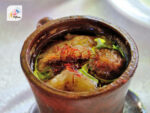
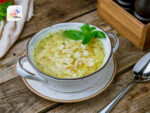
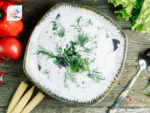
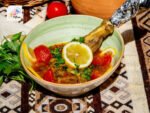
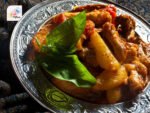
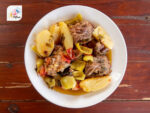

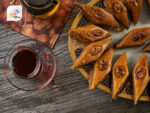




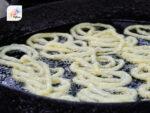

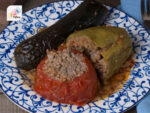
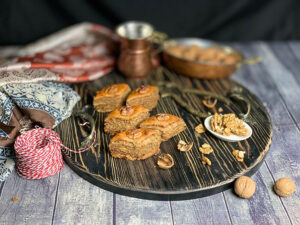
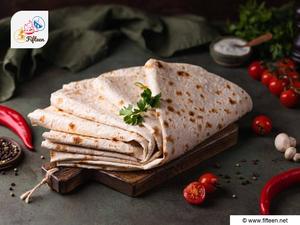
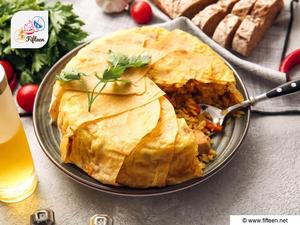
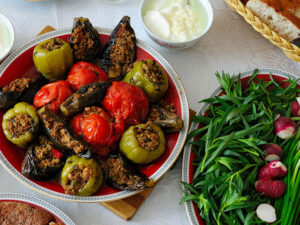
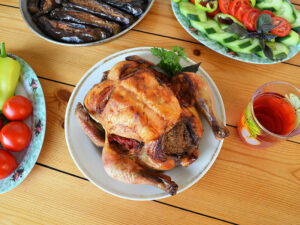
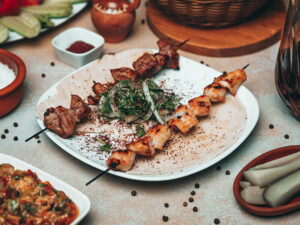
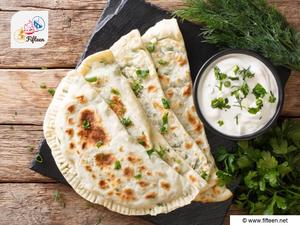
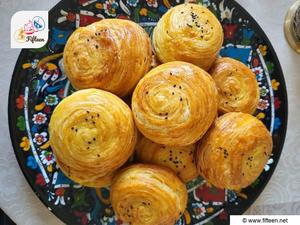
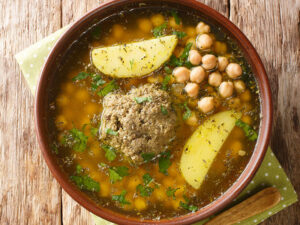
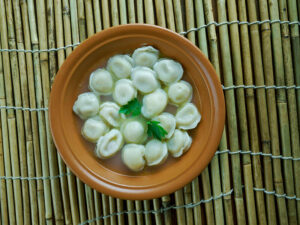
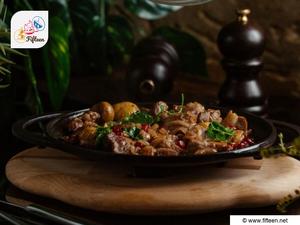
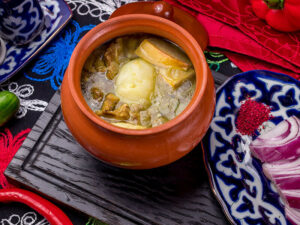
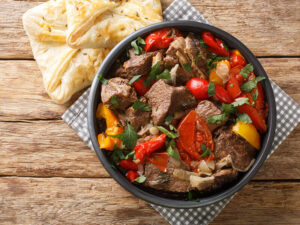
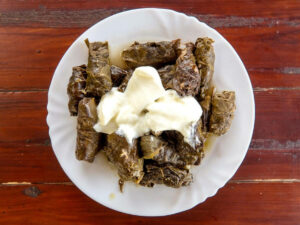
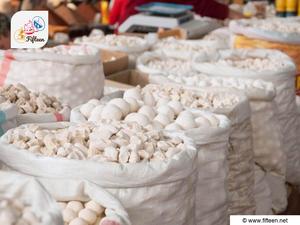
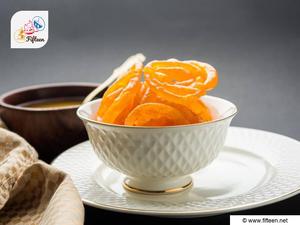
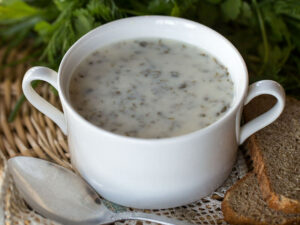
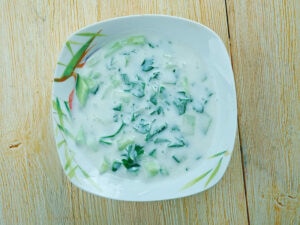
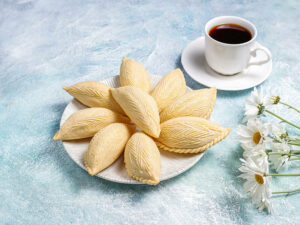
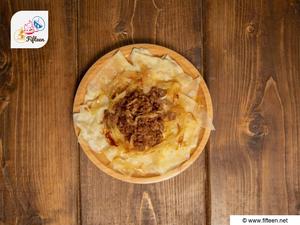
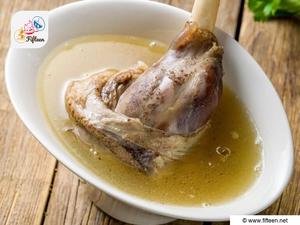
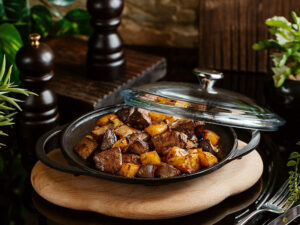
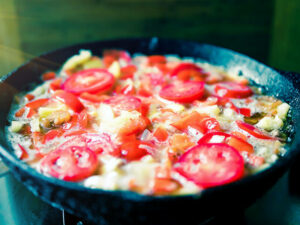
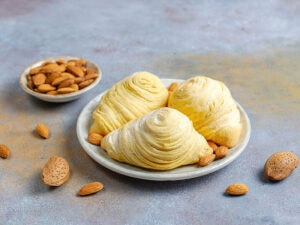
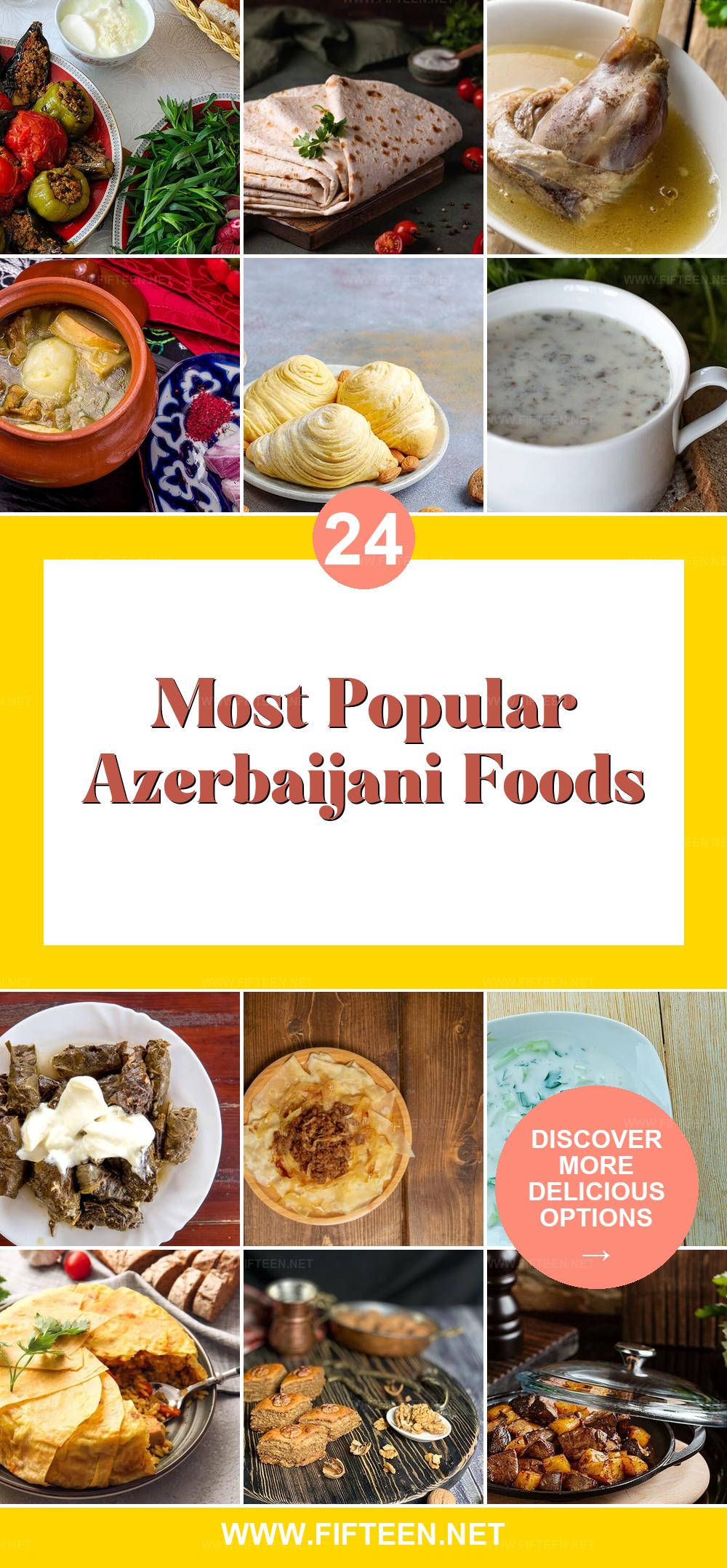
Jamie Scott
Editor in Chief, Senior Content Writer
Expertise
Home Cooking, Meal Planning, Recipe Development, Baking and Pastry, Food Editor, Cooking-video Maker, Western Food Evaluation Expert
Education
Le Cordon Bleu College of Culinary Arts
Local Community College, New York, NY
Jamie Scott is a skilled culinary expert and content creator specializing in Western cuisine. With over 15 years in the culinary field and formal training from Le Cordon Bleu, Paris, Jamie deeply understands how to blend nutrition with delicious flavors. His passion for cooking matches his commitment to making healthy eating accessible and enjoyable.
On Fifteen.net, Jamie brings a fresh perspective to classic dishes and beverages, offering readers insightful recipes, cooking tips, and a fresh view on meal planning that emphasizes taste, health, and simplicity.